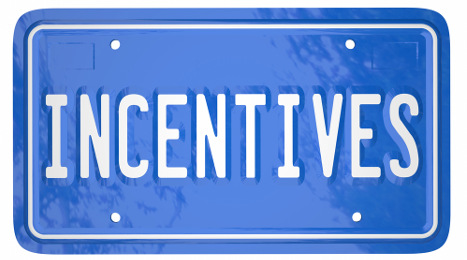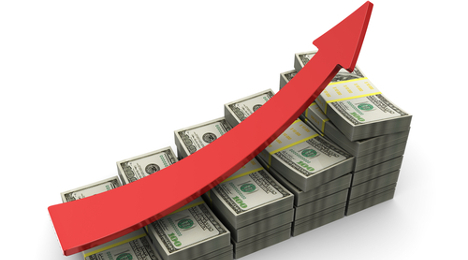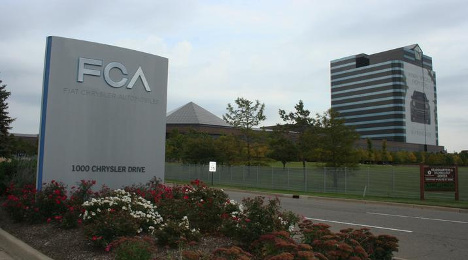Along with an analysis about how ongoing macroeconomic trends are pointing toward positive fortunes for dealerships, the team at KeyBanc Capital Markets attributed an upbeat conversation with Cox Automotive chief economist Tom Webb coupled with the July findings of its monthly dealer survey for producing such a “bullish” outlook.
Before delving into the takeaways from the chat with Webb, 60 percent of dealers surveyed told KeyBanc they posted a year-over-year used-vehicle sales increase in July. And 40 percent of the participants indicated that climb was more than 10 percent.
KeyBanc reported dealers generated those increases “despite the near-term headwind of grounded inventory under recall, and growth should accelerate as recalled parts are expected to come into service departments in the back half of the year.”
Furthermore, financing to turn used metal is on sure footing, too, as all of KeyBanc’s July dealer survey participants mentioned intact or increasing subprime and overall auto financing availability.
Those upbeat survey findings arrived in tandem with KeyBanc’s one-hour teleconference with Webb where analysts and the wholesale expert who is coming back again to the National Remarketing Conference at Used Car Week discussed used-vehicle pricing and demand in detail.
Webb reiterated many points he’s mentioned in previous reports from Auto Remarketing, stating that used-vehicle pricing is strong even as the supply of off-lease vehicles has been growing at 20 percent for the past couple of years, which reflects strong consumer demand.
“He believes, and we share this view, that used vehicle pricing outlook remains solid even as the off-lease volume continues to come in at about 16 percent annual growth through 2018,” KeyBanc analysts said.
“Better equipped, safer cars cost more when new and therefore they cost more when used,” they continued. “Increasing supply is a headwind, but Tom believes in this environment of strong demand and financing availability, it is an immaterial headwind, perhaps a 2-percent decline in prices, which is insignificant to demand or profitability."
Both Webb and KeyBanc noted increasing off-lease supply is good for both the new and used sales outlook.
“It supports new vehicle demand as a majority of lessees (about 80 percent to 85 percent) who turn in expired leases will leave the lot with a new vehicle lease,” KeyBanc said. “It supports used vehicle demand as it improves inventory availability.”
Additionally, KeyBanc published a new analysis of historical U.S. GDP growth, unemployment and U.S. light vehicle seasonally adjusted annual rate (SAAR). The firm noted that its analysis confirmed positive outlook for vehicle demand and dealers based on belief that:
—There is an apparent disconnect between auto stocks and the S&P 500 as, year-to-date, the S&P 500 reflects a positive investor sentiment on the U.S. economic outlook, but the same is not being reflected in the auto stocks.
—The U.S. economic forecast remains positive, in the 1 percent to 2 percent compound annual growth rate range in 2016 and 2017, and is expected to accelerate from weaker first-half growth, largely driven by consumer spending and the high-single-digit growth outlook in the housing market.
—Initial unemployment claims remain on an improving trend and the outlook remains positive, driven by a positive economic growth outlook, as there is a strong reverse correlation between them.
“If good economic outlook equals good labor markets equals good automotive demand, then good economic outlook equals good automotive demand,” analysts said.
The year-over-year double-digit climb in retail used-vehicle sales during the second quarter certainly got the attention of investment analysts who watch Lithia Motors’ results regularly.
What they wanted to know was whether Lithia could sustain this growth trajectory. President and chief executive officer Bryan DeBoer pointed to one factor as a reason why Lithia might be able to surpass the 27,716 used models dealer group stores rolled over the curb in Q2 by a healthy figure again next quarter and beyond.
“The used-car supply that we spoke to last quarter is starting to loosen, which means the units in operation that were sold and put into operation three years to five years ago is increasing,” DeBoer said when Lithia hosted its conference call to share its Q2 financial statement.
“We really believe that we have a great runway, because the supply of used vehicles is growing,” he continued. “We also believe that our future and our ability to take on market changes, the cyclicality or the implications of that or volatility are reduced if you can sell used vehicles.
“With the supply of vehicles out there, it’s been easier in many of our markets to be able to continue to grow profitability and continue to grow our used and/or service and parts space,” DeBoer added.
“And like we've talked about in the past, we believe that volume is a way to secure a stronger future,” he went on to say about used retail sales gains of 10 percent or more. “We believe that those type of levels will be able to persist because the supply is continuing to increase.”
Lithia is facing the same headwind in the used department that many other dealerships are — stop-sales from the Takata airbag situation and other recalls. DeBoer estimated that Lithia has about 1,100 units in inventory with a stop-sale tag.
"We have pretty good pent-up demand, and those are really high-demand certified vehicles that have customers waiting for them,” DeBoer said about those units waiting for parts so they can be made retail ready.
“There could be a surge in the second half so long as we see those parts coming,” he added.
Update on M&A activity
Lithia previously discussed how it has added a trio of stores to its portfolio so far this year with the most recent transaction bringing a GMC Buick franchise in Helena, Mont., into the fold. DeBoer hinted that more acquisition announcements could be coming.
“I think if we look back six months, what we were seeing was a lot of activity, but pricing was out of the range of most buyers,” DeBoer said. “But I think the difference that's occurring now is we’ve hit this point where pricing is more closely mirroring what we’re willing to pay. And I think we're going to continue to see that for the coming quarters.
“In our opinion, we think it’s going to be an extremely busy second half,” he continued. “And I think, most importantly, when we look at acquisitions our return expectations are really high. And if we recall what those are, we expect 20 percent after-tax return on our investments.
“That combined with the idea that we buy most of our stores in rural markets where real estate costs are fairly inexpensive, we really believe that when acquisitions come to be, Lithia is pretty darn close to a greenfield type of model because of that high return expectation, buying underperforming assets in rural markets at a low real estate cost,” DeBoer went on to say.
Energy-sector recovery
Earlier this year, TransUnion explained how economic conditions in energy-dependent states helped in part to push auto finance delinquencies higher in Q1. While the downturn in energy and oil prices still are having an impact, Lithia is noticing improvement as it tries to retail vehicles in these markets.
“Texas is starting to turn a little bit. They were still down a little bit in sales, and their profits were still obviously down. But their ability to start to learn again about used vehicle sales is starting to take hold,” DeBoer said. “We’re excited to see what’s happening in other energy states as well.
“Though Alaska was down a couple percentage points, their earnings were down, too, which is more indicative of what we’d like to see. If revenues go down, then earnings go down about the same, unlike where Texas didn’t have the ability to adjust with and replace new vehicle sales with used vehicle sales. They’re starting to grasp that,” he continued.
“On a positive note, Montana was up 18 percent in revenues, and they were up 22 percent in profit, which is more indicative of what we believe should occur when new vehicle sales begin to flatten, that you can replace those quickly with the other businesses of used vehicles and service and parts,” DeBoer went on to say.
The average per-vehicle amount automakers spent on incentives in July was up 12.5 percent over a year ago, leading some to wonder if we’re heading into dangerous territory.
“The sky isn’t falling yet,” said Alec Gutierrez, senior analyst for Kelley Blue Book, “but we are on an unhealthy path."
Gutierrez was speaking during a conference call Tuesday to discuss July sales results along with Mark Strand, senior manager of market intelligence for Autotrader.
“Incentives have certainly played more and more of a role in driving retail growth,” Gutierrez continued, noting that there was a big push for incentives early in July, particularly for pickup trucks. It did look like incentives were down through the close of the month, he continued, adding that results for the final week of July were still being tallied.
And incentives are not just cash rebates on the hood, he reminded, but include perks on the finance front such as low rates and extended terms.
So what could turn a dangerous path into a more treacherous trail?
“It’s tough to look at incentives in a vacuum,” Gutierrez said. “Just looking at raw incentive spend alone isn’t enough to tell the whole picture. We try and look at incentives and how they relate to average transaction prices.”
Right now, we’re at about a 9.2 percent average spend-to-transaction price ratio, Gutierrez said.
Over the last 10 years, he continued, the market hit a low point in 2012 where it was just shy of 8 percent. The high point, so to speak, came in 2008, when incentive spend was 9.7 percent of transaction price.
So in looking at today versus 2008, “it says that we are not historically in as bad a position as we’ve ever been. But if the trend continues, in the next 12 to 18 months, you’ll see the manufacturers spend at a point that is approaching levels that would point to a little bit more risk and uncertainty.
“So again, at the pace we’re going now, transaction prices are still growing; incentives happen to be growing faster. And if the trend continues unabated, I think we’re at a point that we would characterize, historically speaking, as slightly irresponsible.”
What might this mean for manufacturer health?
“It’s tough to say,” Gutierrez said. “It’s a very different environment today than in 2008 in terms of the way manufacturers are managing their residual portfolios. And that’s specifically related to rental volume; it impacts residuals and impacts their ability to lease and forces them to overincentivize. So we are seeing healthier practices on one side of the business, while cash incentives and other rebates are growing.”
Used-car demand & wholesale prices
Later during the discussion, one caller wanted to know if pent-up demand for used vehicles has been met.
“Pent-up demand is definitely not capped out,” Strand said, noting that average vehicle age has been stuck at 11.5 years for the last three years. As many new cars have gotten on the road, it’s not budging the average age out there.
“Used sales are up strongly this year,” he continued, “and used values are coming down a bit as more off-leases vehicles come back to the market.”
As for auction values, they’re down about 1 percent on a year-over-year basis, Gutierrez said. “That’s better than 2-3 percent a few months ago. In some respects, depreciation has stabilized versus this time last year. With that said, as volume continues to come back, we do believe the market will continue to trend down on a year-over-year basis.
“It wouldn’t surprise me to see in December, CPO inventory closing the year 2-4 percent below where we closed last year. Next year, I wouldn’t be surprised to see similar depreciation. I think in the years to come, 2-3 percent depreciation beyond trend is likely well within the realm of possibility.”
Strand talked about a couple of observations he’s made in the wholesale market.
“I’ve seen conventional wisdom developing that while CPO pricing and used values will continue to soften, there’s not the threat in the immediate term that you’re gonna see a collapse in used-vehicle prices. Demand is there. At the right price, people are going to buy the vehicles out there,” Strand said.
“The other thing developing is we’re seeing with rental car companies and dealerships, we’re seeing some pilots with Uber and Lyft. Our understanding is Uber is looking to build out a fleet of at last 200,000 cars to be leased. That’s going to take significant supply out of the wholesale market that would have gone to auction and put downward pressure on prices.”
In other words, we could see a moderate softening of used values, but not a collapse.
“If worried about softening new sales, OEMs can manage CPO smartly in terms of level of leasing and residual impact, thus keeping values and profit margins healthy to capitalize on the used market where there should be healthy demand,” Strand said.
With new-vehicle transaction prices climbing, automakers are ramping up incentives. In return, models are rolling over the curb at a pace that multiple analysts who sent their assessments to Auto Remarketing believe to be plateauing.
One of the most relevant observations for used-car managers is what Edmunds.com noticed about new-vehicle leasing activity in July since those vehicles likely will be prime certified pre-owned inventory options in about 24 to 36 months.
After touching on 0 percent financing availability, Edmunds.com executive director of industry analysis Jessica Caldwell said, “We’re also seeing indicators that lease deals were much harder for car shoppers to come by in July as lease penetration dropped to 27.8 percent, the lowest level since May of 2015.
“While some of the softness in leasing can be attributed to seasonal fluctuations and the fact that (General Motors’) lease penetration dropped below 20 percent, lease customers are very price sensitive and may need a bit more of a nudge than they’re currently getting to convince them to close the deal,” Caldwell continued.
Leasing certainly is an option for consumers looking to maintain affordability as new-vehicle transaction prices keep moving higher — a development noticed by both Kelley Blue Book and TrueCar.com.
TrueCar estimated the average transaction price (ATP) for a new light vehicle was $32,518 in July, up 1.3 percent from a year ago. Average incentive spending per unit rose by $159 to $3,225. The ratio of incentive spending to ATP was 9.9 percent, up from 9.6 percent a year ago.
“What is interesting to note is that while overall national retail spending remains strong and consumer confidence is relatively unchanged, we are probably seeing some attempts in incentive spending to boost auto sales beyond its organic demand,” said Oliver Strauss, TrueCar’s chief economist.
The analysts over at Kelley Blue Book estimated average transaction price (ATP) for light vehicles came in even higher in July. They pegged ATP at $34,264 as prices for new vehicles increased by $832 year-over-year and $82 compared to the previous month.
“Low interest rates, longer loan terms and increased leasing are helping consumers afford their monthly payments, which would be upwards of $550 per month on a traditional 60-month term,” Kelley Blue Book analyst Tim Fleming said.
If buyers are entering into a retail contract instead of a lease, it appears they’re not getting 0 percent APR at the clip that OEMs sometimes will go to turn new metal, especially in the summertime.
Caldwell said, “0 percent financing deals were much more common last summer than they are now: 12.9 percent of new car loans in July of 2015 were 0 percent, while only 10.2 percent of loans were 0 percent this July.”
The July slowdown evidently isn’t an anomaly, either.
The July Kerrigan Auto Retail Index — composed of the seven publicly traded dealer groups with operations focused on the U.S. market — rose 18.28 percent in July, significantly outperforming the S&P, which analysts said rose 3.56 percent for the month. However, Kerrigan Advisors explained that industry news was “very mixed” for the month so much of this recent rise was “likely a recovery from being over-sold in the prior month.”
In fact, the KAR Index fell 11 percent in June, and year-to-date it’s now off by 10.34 percent.
In its index report, Kerrigan Advisors also mentioned that to this point Ford became the first major automaker to state that the U.S. auto market’s growth was ending. Kerrigan Advisors added the equity research team at Barclays changed its outlook for the U.S. auto market from “plateau” to “eroding plateau.”
Brian Johnson of Barclays said, “Ford acknowledged for the first time any of the pressures we have been talking about for the past few weeks. There’s a big difference between analysts and writers saying this market is poised to get softer, and hearing it from one of the largest players in that market.”
For dealerships looking for an element to signal a turnaround, Stifel chief economist Lindsey Piegza didn’t exactly offer one. Piegza discussed the latest trends regarding how buyers are going to pay for the vehicles they might secure.
Piegza recapped that personal income rose 0.2 percent in June, slightly less than expected, according to Bloomberg. She continued that compensation rose 0.3 percent in June, thanks to a 0.3 percent rise in the wage and salary component.
Piegza also pointed out disposable income increased 0.2 percent in June. Year-over-year, personal income increased 2.7 percent at the end of the second quarter, down from a 2.9-percent annual pace reported the month prior and even further below a near 4 percent growth rate at the start of the year.
“Bottom line,” Piegza began, “as the latest Q2 GDP report showed, the U.S. consumer was doing the heavy lifting April to June, keeping the domestic economy afloat. In other words, the U.S. consumer appears to be on very solid footing, at least for now.
“The continued deceleration of income growth, however, coupled with an ongoing lack of business investment suggests the consumer may face additional hardship in the second half of the year, potentially restraining spending activity below these more recent rates of consumption,” she continued. “After all, without the business investment and development needed to spur robust job and income growth, the consumer will be hard-pressed to maintain a near 4 percent spending pace heading into the second half of the year.”
So perhaps if potential buyers don’t have as much in their wallets when they’re at the showroom, perhaps a point made by KBB’s Fleming could be a silver lining for the used department.
“As the price gap to late-model used cars increases, more shoppers may turn to the pre-owned market for their next vehicle, which could mark a big departure from the new-car sales growth the industry has seen during the past five years,” he said.
Lithia Motors watched its retail used-vehicle sales figure overall and on a same-store basis climb by double digits year-over-year in the second quarter, which turned out to be the highest second quarter for adjusted net income in company history.
Lithia reported that it turned 12.3 percent more used vehicles during Q2 as all of the group's stores had 27,716 used models roll over the curb. On a same-store comparison, the year-over-year improvement came in at 10.2 percent.
The moving of more used metal helped Lithia overcome a 4.5-percent dip in used-vehicle gross profit as the per-unit figure softened to $2,425.
Also helping the company cause was a 4.9 percent increase in F&I gross profit per unit as the overall figure moved up to $1,271.
The used department helped to push Lithia to a 2-percent rise in Q2 unadjusted net income to $51.4 million, or $2.01 per diluted share.
For the first six months of 2016, Lithia highlighted its revenues increased 8.7 percent to $4.1 billion from $3.8 billion in the first six months of 2015 and unadjusted net income was $3.56 per diluted share, compared to $3.47 per diluted share. Adjusted net income per diluted share for the first six months of 2016 increased 8.0 percent to $3.52 from $3.26 for the first six months of 2015.
“Our stores delivered strong results in the quarter, growing all business lines,” Lithia president and chief executive officer Bryan DeBoer said. “Led by a 10.2-percent increase in used vehicle sales and a 7.4-percent increase in service, body and parts sales, our team is capitalizing on both a growing supply of used vehicles and units in operation sold over the past seven years that are now returning for service.
“We are capturing new-vehicle market share and increasing F&I per unit, which we believe are the key drivers to future organic growth, while maintaining adjusted SG&A as a percentage of gross profit below 67 percent,” DeBoer said.
Speaking of new vehicles, Lithia reported that when Q2 closed on June 30 its stores had retailed 36,059 new units, a 2.7-percent improvement year-over-year. Lithia’s new-vehicle margin improved by almost the same rate, ticking up by 2.3 percent to $2,021.
And Lithia continues to add more dealerships to its portfolio to turn both used and new metal. With the addition of a GMC Buick franchise in Helena, Mont. during the quarter, Lithia completed three acquisitions so far 2016.
“We anticipate a sustained new vehicle sales environment of 17 million units in the coming years. This provides Lithia several benefits including a predictable and profitable cadence of new car sales and incrementally higher service revenues as the vehicles sold over the past six years age and require maintenance,” DeBoer said.
“Additionally, the increasing supply of used vehicles will drive incremental revenue opportunities,” he continued. “Most importantly, a static SAAR level will spur further acquisitions as the aging dealer body seeks the optimal time to retire. These factors increase our confidence in establishing a new milestone of $9 in earnings per share, which we will strive to achieve through improvement in our existing locations and acquisition activity in both the Lithia and DCH platforms.
“We will continue our growth and believe the best use of capital is expanding our store base,” DeBoer went on to say.
Editor’s note: Watch for an upcoming report in Auto Remarketing Today highlighting more of Lithia’s used-vehicle operation.
Asbury Automotive Group is being affected by stop-sales related to the ongoing Takata airbag recall to the point that some company stores are running out of available space to park them.
The company on Tuesday reported a 4 percent dip in used vehicle retail revenue during the second quarter, with unit sales down 5 percent on a same-store basis.
However, “With better used vehicle management, we were able to improve our gross profit per unit by $114 to $1,769, our highest level in a year,” David Hult, executive vice president and chief operating officer, said during a conference call in which company executives discussed quarterly earnings.
According to Hult, stop-sales tied up 10 percent or roughly $16 million of Asbury’s inventory in the second quarter. That’s up from $14 million in the first quarter.
About a third of the automotive group’s more than 80 stores are affected by stop-sales. At some stores, as much as 40 percent of inventory is impacted.
“We’ve been told by our partners that they’re going to take care of the customers first, inventory second,” Hult said. “We are being compensated.”
As far as how the OEMs are making up for vehicle depreciation, that varies, he said.
“Every OEM is different. On some of them, there will be no economic impact. On others, there will be probably some loss that we’re going to suffer by the time we get these lots cleared.”
How fast the lots get cleared, of course, depends on how fast the replacement airbags arrive. Recent estimates indicate that only a fraction of the 70 million or so recalled vehicles in the U.S. have been repaired.
“They’re (the airbags) coming in on a very light flow, but not what we expected by this point. And what we’ve heard most recently is we shouldn’t expect to see them in any kind of volume until later in the third quarter, potentially early fourth quarter,” Hult said.
Craig Monaghan, president and chief executive officer, chimed in on a scenario in which “40 percent of your inventory is on stop-sale, and we’re running out of space.
“In some cases, we’re looking for nearby lots to park these vehicles,” he said. “It has become very disruptive. But they are vehicles that, when we get the airbags, that we think are going to be very marketable. So we are holding on to them for the most part, and we’re just going to ride this thing out.”
While Sonic Automotive’s EchoPark operations continued to gain steam during the second quarter, the dealer group’s overall used-vehicle performance during the second quarter softened a bit when compared to a year ago.
Sonic highlighted on Tuesday that its EchoPark stores — rooftops that only turn used metal — posted a 28.9-percent sales gain in Q2, retailing 1,136 vehicles — a figure up by 255 units. And just before the quarter closed on June 30, Sonic rolled out two more EchoPark locations in the Denver market.
“We are also very pleased with the continued progress of EchoPark as we opened two new stores in the Denver market,” Sonic executive vice president of operations Jeff Dyke said. “Our property acquisitions in the Carolinas and Texas remain active.
“We are beginning to see store-level profitability as our EchoPark brand grows in Denver, and thus fueling our excitement about EchoPark and its long-term prospects in an industry that is ripe for our guest experience model,” Dyke continued.
“The guest feedback at EchoPark is remarkable, further supporting our strategic entry into this part of the pre-owned market. We have listened to our guests' needs and are delivering on those expectations,” he went on to say.
EchoPark certainly was the shining part of Sonic’s used-vehicle performance in Q2. The group watched its overall used sales dip by 3.3 percent to come in at 29,287 units. On a same-store basis, Sonic’s used sales ticked lower, too, only by 1.8 percent.
At the same time, Sonic’s Q2 gross margin percentage dropped to 5.9 percent, down from 6.2 percent a year earlier. The group’s used gross came in at $1.262 per used unit retailed, off from $1,343 in the year-ago quarter.
However, Sonic didn’t pull the wholesale lever on as many units during the second quarter. The group wholesaled 7,212 vehicles, down from the 8,010 units that went down the lanes or to wholesalers a year earlier.
Despite some turbulence in the used department, Sonic generated net income from continuing operations for the second quarter of 2016 of $23.0 million, or $0.50 per diluted share. Included in these amounts are a pre-tax loss of $3.4 million, or $0.04 per diluted share, related to EchoPark operations.
Net income from continuing operations and related diluted earnings per share for the second quarter of last year were $15.1 million and $0.30 per share, respectively. On an adjusted basis, net income from continuing operations for the second quarter of 2015 was $23.4 million, or $0.46 per diluted share. Included in these adjusted amounts is a pre-tax loss of $4.1 million, or $0.05 per diluted share, related to EchoPark operations.
Helping to lift Sonic’s top-line Q2 numbers were a 3.0-percent rise in same-store fixed operations revenues as well as a 2.9-percent gain in same store finance and insurance revenues and gross profit.
On the new-car side, Sonic’s sales softened by a similar rate as its used department. Sonic retailed 33,782 new models, down 3.4 percent year-over-year. The gross profit percentage on those new models stayed flat at 5.1 percent as Sonic posted $1,949 in gross when a new model rolled over the curb.
“The industry was solid again this quarter and our performance reflected that,” Dyke said. “Our Sonic Automotive franchise store business continues to be supported by our team’s ability to execute our playbook processes as we work to perfect the One Sonic-One Experience culture in our stores.
“Our guests' responses to our new process, technology and culture have been excellent as reflected in our customer satisfaction scores and the reviews we receive via Google, Yelp, etc.,” he continued. “While we saw a decline in the new car retail SAAR in the quarter, new car margins have stabilized and heavy new car inventories from the first quarter are coming back in line with historical levels.
“We have worked with our manufacturer partners to develop action plans to address recall and stop-sale issues across several brands and are executing those plans,” Dyke went on to say. “We are pleased that we will be opening several new add points this year including Mercedes Benz in McKinney, Texas (outside of Dallas), Audi in Pensacola, Fla., and Nissan in Cleveland, Tenn. (outside of Chattanooga).
“These additional points reflect the strength of our organization and relationship with our manufacturer partners. We look forward to announcing several more add points in the coming quarters,” he added.
Fiat Chrysler Automobiles acknowledged on Tuesday that its “streak” of year-over-year monthly new-vehicle sales improvements since April of 2010 actually ended nearly three years ago.
In response to recent press reports that raised questions about the manner in which FCA reported vehicle unit sales data on a monthly basis, the automaker explained its new methodology showing that its “streak” of year-over-year monthly sales gains would have stopped in September 2013 with the OEM sustaining a 3-percent drop.
OEM officials noted they would have posted sales dips last August (down 1 percent) and May of this year (down 7 percent), as well.
“The so-called ‘sales streak’ would have stopped in September 2013 (after 40 months) and would have had three additional periods of sequential year-over-year improvements of 22, 8 and 1 month(s),” FCA officials said.
Despite the potential discrepancies, the automaker emphasized its annual sales volumes under the new methodology for each year in the 2011-2016 period are within approximately 0.7 percent of the annual unit sales volumes previously reported.
FCA indicated the monthly adjustments to previously reported sales are a result of the adjustment to deduct sales later unwound and add back sales attributable to previously unwound sales over the period Jan. 1, 2011 to June 30 of this year, and are a mix of positive and negative numbers that did not exceed 0.5 percent of the reported data in any month. The maximum numerical reduction from previously reported data was 770 units (0.5 percent of the month’s volume) in May 2015 and the maximum numerical addition to previously reported data was 437 units (0.4 percent) in September 2014.
The OEM added the total over the 2011 to 2016 period representing unwound transactions previously reported as sold for which vehicles remain in dealer stock at June 30 of this year is approximately 4,500 vehicles, or 0.06 percent of the total volume reported over the period (7.7 million vehicles).
FCA added that it will report its July sales using the new methodology.
“This note is intended to explain how FCA US’ monthly sales reporting process has worked, recognizing the limitations inherent in a process that collects sales data entered by some 2,600 dealers until midnight of the last reporting day of a month and releases the aggregate data typically within eight hours of the final data entries,” the automaker said in its announcement.
“FCA US believes that its current process has been in place in more or less the same form for more than 30 years, with reporting previously being made every 10 days and eventually evolving into monthly cycles,” the company continued.
The automaker’s complete explanation of its new-vehicle sales reporting process can be viewed here.
Contrary to what’s been plaguing many dealers, Asbury Automotive Group enjoyed a rise in used-vehicle gross margin during the second quarter despite a retail environment that president and chief executive officer Craig Monaghan described as “choppy."
Group management reported during a conference call to discuss Q2 results on Tuesday that its used-vehicle gross margin moved from 7.7 percent a year ago to 8.3 percent in the quarter that wrapped up on June 30.
Asbury, which operates 82 dealerships and three stand-alone used-vehicle stores, reported net income for the second quarter of $36.7 million, compared to $41.1 million in the same quarter last year.
Total revenue for the second quarter was $1.6 billion, down 4 percent year over year (attributable mostly to strategic divestitures during the second half of 2015, according to senior vice president and chief financial officer Keith Style).
Total revenue on a same-store basis was down 1 percent year over year.
Asbury logged 19,612 used vehicle sales in the second quarter, down from more than 21,000 in the same quarter last year, and has generated more than $831 million in used retail revenues year to date.
Retail revenue on the used side was $418.3 million, down 7 percent year over year, while used gross profit fell by 1 percent.
Used-vehicle unit sales were down 5 percent, attributable mostly challenges associated with stop sales. That being said, with better used-vehicle management, gross profit per unit increased to $1,769, “our highest level in over a year,” said David Hult, executive vice president and chief operating officer.
And with improved wholesale performance, total gross profit was up 3 percent.
Average price per used unit was $21,329, up slightly from the same period a year ago, while average gross profit per used unit was up slightly as well.
On a same-store basis, Asbury saw used-retail revenue of $411.8 million for the quarter, down from $429.3 million in the same period last year. Used retail gross profit came in at 34.1, up 0.5 percent year over year. Also on a same-store basis, used retail gross margin was 8.3 percent, up from 7.8 percent in the same period a year ago.
Asbury opened its third Q Auto store, in Tampa, Fla., during Q2, with a fourth slated to open in the same market next month.
Reiterating a “choppy” sales theme thus far in 2016, Monaghan nonetheless said Asbury’s teams have responded well to the challenge.
But how, if at all, has this altered expectations since January?
“I think we sit here today in a market where we have a good week and bad week, a good month and a soft month,” Monaghan said. “Broadly speaking, I don’t think things feel a lot different. There’s certainly plenty of uncertainty. … We need to make sure out stores are right-sized and staffed appropriately. … We continue to look for ways where we can drive incremental productivity, and capital allocation is key.
“I think one thing that we might think about that’s maybe just a little different today than it was in January is that we think this type of environment creates a lot of opportunity. We think it makes sense for us to stay flexible.”
Editor’s note: Stay tuned for a look at how stop-sales are impacting Asbury Automotive Group’s used business.
The latest Beige Book — the Federal Reserve’s ongoing effort to gather anecdotal information on current economic conditions through reports from bank and branch directors and interviews with key business contacts, economists, market experts and other sources — showed pockets of dealership turbulence in several of the 12 districts.
While contacts in Cleveland, Kansas City and Dallas expressed an optimistic outlook for future vehicle sales, most districts noted that auto sales slowed during the reporting period, but remained at fairly high levels.
All but the First District in Boston discussed the auto industry in the latest Beige Book that Fed officials released on Wednesday. Many assessments not only touched on what happened as the second quarter closed but also delved into future expectations, since the Fed won’t offer its next Beige Book until after Labor Day.
Here’s the rundown of auto-industry content shared in the newest Beige Book:
New York
The Fed indicated that new-vehicle sales are reported to have softened somewhat in May and June, though they are still said to be at fairly high levels. Officials mentioned inventories of new vehicles are reported to be mixed, largely reflecting availability of financing incentives on some models but not others.
The report also acknowledged the used-vehicle market remains soft, with both sales activity and prices drifting down in recent months. Officials pointed out that retail and wholesale credit conditions generally remain favorable.
Philadelphia
Overall, Third District dealers told the Fed that vehicle sales slowed further during the current period but remain at high levels.
Officials added that more precise early period reports indicated sales were lower than during the same time last year.
“Anecdotal reports for recent weeks suggest sales will be flat, at best, with last year,” the Fed said. “Dealers are content with the relatively high sales numbers; however, they spoke of ‘managing the plateau’ and of caution against overextending their businesses financially.
Dealers in this district still see growth potential in 2017, according to the Beige Book.
Cleveland
Year-to-date new-vehicle sales through May came in on par with those of a year ago, according to dealers in the Fourth District.
The Fed found that automaker incentives continue to rise and are now reportedly above 10 percent, but average transaction prices are also rising because of the ongoing shift in consumer preferences from cars to light trucks (including SUVs).
“New-vehicle unit volume is expected to remain at high levels this year, though dealers anticipate retail transactions to decline and fleet sales to rise,” officials said.
And now some good news for the used departments at dealerships in the district:
“Consumers are seeing increasing value in the purchase of used cars,” officials said. “The large number of leased vehicles being turned in is putting downward pressure on their resale prices. Year-to-date sales of used vehicles rose almost 5 percent compared to those of a year ago.”
The Fed added that dealer payrolls increased along seasonal trends.
Richmond
The Fed found that vehicle sales varied by location.
“A dealership in western Virginia reported that a recent increase in their digital footprint has helped push up foot traffic and sales, and an executive at a dealership just outside of Washington, D.C. said that sales have been stronger since our previous report,” officials said.
“Dealerships in central North Carolina and the Hampton Roads region of Virginia reported that sales remained steady at previous levels,” they continued. “Sales of heavy trucks declined, according to a dealer who also noted that higher prices caused by changes in engine emissions requirements in the next model year could weaken future sales.”
Atlanta
Heading deeper into the South, dealers reported some slowing in the pace of sales in May.
“Merchants expect sales to remain relatively flat over the next few months,” the Fed said.
Chicago
Purchases of new and used vehicles continued to be “robust, and leasing activity remained “strong,” according to the Beige Book recap of the Seventh District.
Officials noticed average vehicle transaction prices again moved higher as the mix of sales continued to shift toward larger, more expensive vehicles and because of greater demand for high-tech options.
St. Louis
Dealers in eastern Arkansas reported that sales continue to be favorable compared with 2015.
“Multiple dealers noted that they expect an increase in year-over-year sales in the third quarter,” the Fed said.
Minneapolis
As energy prices soften, dealers in the Ninth District are seeing the impact.
“Sales of new vehicles at a dealership in Rapid City, S.D., were off by 50 percent and used-vehicle sales were off by 30 percent since January due to layoffs in Wyoming coal mines and oil fields in North Dakota,” officials said.
Kansas City
The Beige Book indicated sales were flat and remained below year-ago levels.
“But dealer contacts expected a moderate pick-up in the coming months,” the Fed said. “Auto inventories decreased and were expected to fall further.”
Dallas
The Fed found that sales in this district held steady and were in line with year-ago levels.
“Sales are projected to be strong in 2016, but contacts expressed concern about the potential negative impact of the election on consumer confidence,” officials said.
San Francisco
And finally out West, officials recapped that vehicle sales eased somewhat, “and contacts noted that some dealers were selling new vehicles at a loss to meet sales quotas set by manufacturers.”












